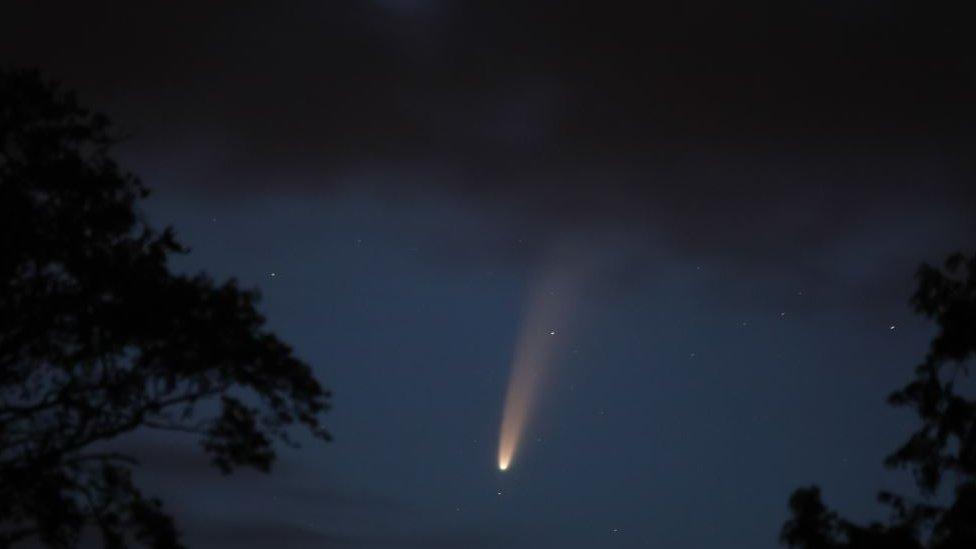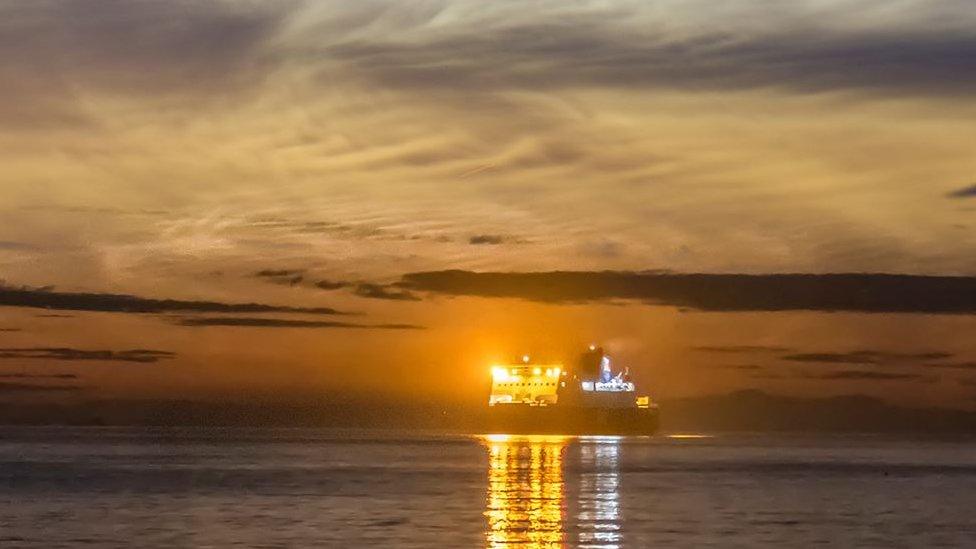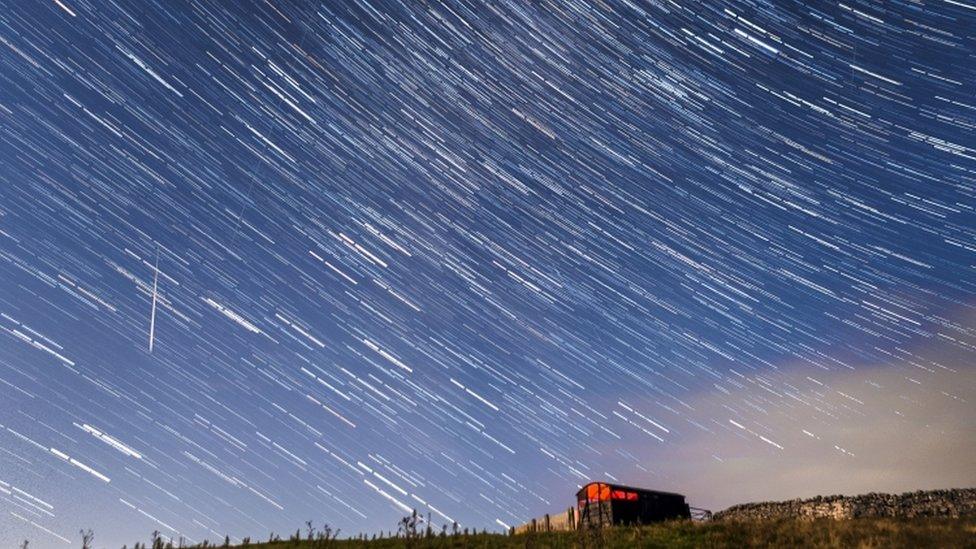Perseid meteor shower is 'greatest show' for stargazers
- Published

The Perseid Meteor shower is a stunning annual event
We are sitting amongst the pine woods in the dark, with eyes to the sky and fingers firmly crossed.
All afternoon the cloud cover has been solid and unbroken, but, tantalisingly, the latest satellite image is promising clearer skies to the west.
And tonight that really matters.
Because high above us, at the edge of the atmosphere, nature is putting on one of its greatest light shows, the Perseid meteor shower, which reaches its peak and gives prime viewing on Tuesday and Wednesday nights.

The Neowise Comet was a vision in sky above Northern Ireland
But right now we can't see any of it. Welcome to the world of the night sky photographer.
Special year for stargazers
The weather this summer has been a bit of a damp squib. But for stargazers it has been a very special year.
Tonight, I am joined by two of the very best in Northern Ireland, Alistair Hamill and Martin McKenna.

The skies have been producing some amazing scenes since the weekend
Already in 2020 they have observed displays of noctilucent clouds in the upper atmosphere and C/2020 F3NEOWISE, the best comet sighting in 30 years.
We are based at the OM Dark Skies Park and Discovery Centre in Davagh, County Tyrone. Or rather we are based outside it.
The new observatory operated by Mid Ulster District Council isn't yet open to the public.
Finishing touches are being carried out to the displays inside after work was delayed by the Covid-19 crisis. It's now scheduled to open in October.
Allow X content?
This article contains content provided by X. We ask for your permission before anything is loaded, as they may be using cookies and other technologies. You may want to read X’s cookie policy, external and privacy policy, external before accepting. To view this content choose ‘accept and continue’.
But, for now, the night is warm and the decking around the outside of the building is reasonably comfortable while we watch and wait for astronomical darkness and hopefully a break in the clouds.
Clouds and comet
Whilst the Perseid meteor shower is an annual event, the display of noctilucent clouds on show over Northern Ireland this summer has been very fine.
These clouds of cosmic dust and frozen water vapour which form at the edge of space, 82 kilometres above the Earth, are a feature of the short summer nights.

The display of noctilucent clouds on show over Northern Ireland this summer has been very fine
The ghostly clouds in the highest part of the atmosphere reflect the light from the sun which is already well below the horizon.
"I love the romance of these clouds that glow in the dark," says Alistair Hamill.
"There's no enhancement from the camera, what you see with the naked eye is exactly what you get.
"They live in the part of the atmosphere that we understand the least. Higher than the weather balloons, but lower than the satellites.

A digital composite of 30 photographs of the meteor shower taken over a period of 15 minutes in the Yorkshire Dales National Park in 2017
"The condensation nucleae which allow the clouds to form are made up of space dust from meteors like the ones we are hunting tonight.
"Matter which has circulated in space for billions of year going out, not with a whimper, but with a final, glorious display."
We have lights. But not the ones we were hoping for yet. A car is approaching down the forest track.
The driver is Terry Moseley, a former president of the Irish Astronomical Association and my guest several hours earlier for Evening Extra.
He's been lured back by dark skies and the prospect of the cloud clearing.
He says that this summer has been important for the appreciation of astronomy, especially the Neowise Comet which was visible for two weeks in July.
"People were getting fantastic photographs showing a lot of detail, even with a smart phone," he says.
"Some showing basically two different tails, the dust tail and the ion tail."

Finishing touches are being carried out to the displays inside Davagh observatory
Martin McKenna has rather more than a smart phone. He is known as the night sky hunter and tonight he is on the hunt for meteors.
The skies have now cleared over Davagh, and as my eyes adjust, the number of visible stars grows by the minute. I haven't seen any of the meteors yet.
But Martin has: "Five so far."
His excitement is clear. And it's helped by the messages that he's getting from observers in other parts of Northern Ireland who are clouded out.
"It's good isn't it," he says, a big grin from ear to ear.
"We're lucky. But it's not just luck, it's perseverance. You have to put the hours in to make the opportunities."
The night is getting darker. Martin and Alistair adjust cameras.
The meteor count is up to 13 and it is clear that even for these experienced astro-photographers that it is turning into a very special night indeed.